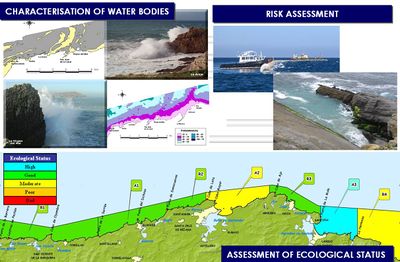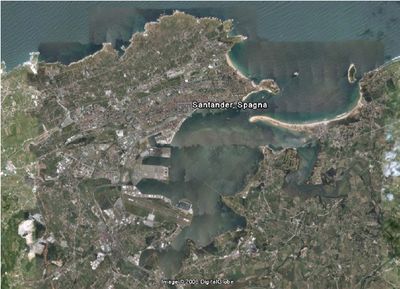Difference between revisions of "Portal:THESEUS/Santander spit"
| Line 32: | Line 32: | ||
around the Bay include important industrial assets together with transportation and life-support systems | around the Bay include important industrial assets together with transportation and life-support systems | ||
that are endangered due to sea level rise and increasing storminess including higher waves and high winds. | that are endangered due to sea level rise and increasing storminess including higher waves and high winds. | ||
| − | [[Image:Sant.jpg|400px|thumb|Aerial view of Santander study site. The spit at the right hand-side.]] | + | [[Image:Sant.jpg|400px|thumb|left|Aerial view of Santander study site. The spit at the right hand-side.]] |
Three existing video-camera systems will be used to improve and validate numerical algorithms to detect the shoreline and flooding levels as well as runup and overtopping over infrastructures and dunes. | Three existing video-camera systems will be used to improve and validate numerical algorithms to detect the shoreline and flooding levels as well as runup and overtopping over infrastructures and dunes. | ||
This information will be also used to validate new prediction tools as to evaluate the performance of risk | This information will be also used to validate new prediction tools as to evaluate the performance of risk | ||
Revision as of 13:17, 10 March 2010
- Detailed description of the sites
The Bay of Santander is the largest estuary on the North coast of Spain, (43°28N 3°48W), at the Gulf of Biscay, with an extension of 22.42 km², 9 km long and 5 km wide. The Northern coast of Spain is divided into a series of pocket beaches and small inlets isolated between rocky headlands. Waves on the Gulf of Biscay approach mostly from the NW with a mean significant wave height of 1 m and a typical winter storm wave of 5 m. The tides are semi diurnal with a mean tidal range of 3 m and a spring tidal range of 5 m. The entrance to the Bay is lined by the Sardinero beaches. The access to its interior is through a narrow channel of water between the Magdalena Peninsula, and the sandbanks of the El Puntal, a 2.5 km long series of beaches and dunes that protect the inner waters of the Bay. The middle and eastern part of the spit are fully exposed to the NW Cantabrian swell waves, the beach shows a mild slope bathymetric profile which represents a dissipative beach with a wide surf zone. On the contrary, the west end of the spit is characterized by a highly-steep reflective beach in accordance with the reduced wave height due to its location on the sheltered area behind the Magdalena Peninsula. In addition, waves approach with high obliquity from the E-NE sector, due to the diffraction and refraction effects. The morphology of El Puntal spit has been substantially modified in the past two centuries, mostly due to a decrease in tidal prism caused by a land reclamation project in Santander Bay in 1875. As a result, the spit end has turned towards the bay and the mean shore normal in that section is now oriented towards the North. The spit is severely affected by periodic flooding events resulting in important erosion processes. Furthermore, the spit is highly vulnerable to climate change - induced sea level rise and wave climate modification.
Due to the influence of Santander and its metropolitan area, nearly half of the population, of the region (250.000 inhabitants) is gathered around it, which makes the anthropic pressure on this area of water quite notable. Due to this anthropic pressure the morphology of the bay has suffered important changes in the last centuries. It is estimated that more than 50% of its original extension has been filled up, drying up a large amount of marsh area, to be used as grasslands, to expand the Port of Santander, and to create new industrial and residential areas together with the local airport. At the moment work is going on to try and recover the seaside ecosystem in some areas of high ecological value. Besides most the large urban areas around the Bay include important industrial assets together with transportation and life-support systems that are endangered due to sea level rise and increasing storminess including higher waves and high winds.
Three existing video-camera systems will be used to improve and validate numerical algorithms to detect the shoreline and flooding levels as well as runup and overtopping over infrastructures and dunes. This information will be also used to validate new prediction tools as to evaluate the performance of risk mitigation technologies based on improving management of sediment stocks and improved technologies for nourishment, dredging and coastline stabilization (nourishment of the coastal natural sediment transport + beach nourishment and re-use of dredging spoil). The video images analysis of artificial inundation of tidal marshes nearby will also constitute a unique opportunity for the evaluation of artificial inundation processes for the construction of flooding buffers. Santander site benefits from the fact that it has been included as a site in other EU funded projects such as Coastview (camera systems) as well as in national projects which have resulted in operational systems to evaluate flooding risks or marine climate variability and trend analysis that will be very useful for this new project.

